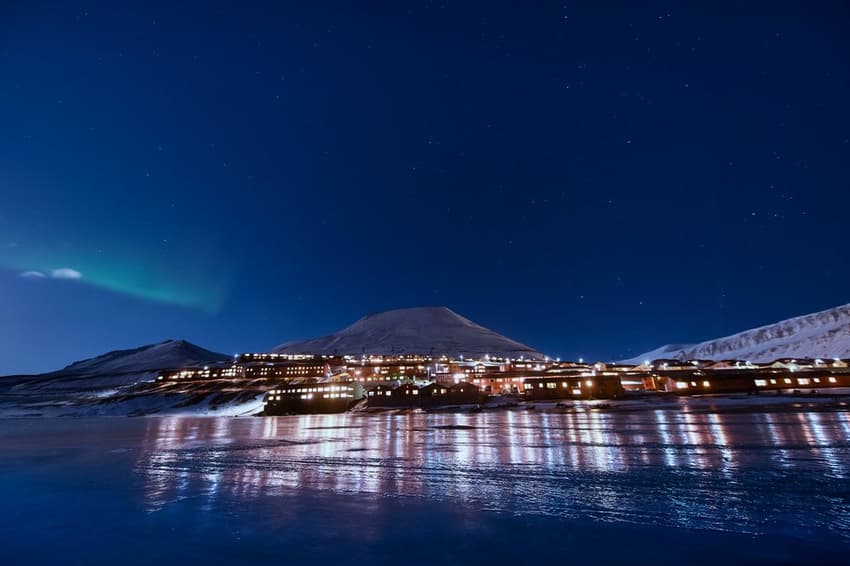North Norway’s polar night is about to begin. Here are the facts you need to know

In late November, the sun will set in Tromsø and won’t be seen again until January.
Other parts of North Norway above the Arctic Circle will see similar months of the annual polar night.
In Longyearbyen on Svalbard, the polar night lasts from the last week of October until mid-February.
Here are all the facts you need to know about the ‘dark time’ above the Arctic Circle in Norway.
The polar night — defined as the period in which the sun is below the horizon 24 hours a day — occurs both north of the Arctic Circle and south of the Antarctic Circle (at opposite times of the year).
In the northern hemisphere, the polar night occurs due to the northern part of the earth tilts away from the sun during this time.
The Latin name for the Northern Lights, Aurora Borealis, means ‘red sky at morning in the north’.

Photo: surangastock/Depositphotos
The Northern Lights occur as a result of particles from the sun hitting the earth’s atmosphere, or changes in the magnetosphere caused by solar wind.
Norwegian folklore says you shouldn’t wave at the Northern Lights. Doing so will cause the lights to come and take you away, so the myth goes.
People who live north of the Arctic Circle often find it harder to sleep during the polar night. This is because melatonin, a hormone which helps regulate circadian rhythms, is stimulated by light.

Photo: MitaStockImages/Depositphotos
Darker days mean the body finds it harder to regulate its melatonin levels, which can wreak havoc on sleeping patterns.
Although the olar night is associated with pitch black, it’s not completely dark by definition. In fact, only small areas close to the poles experience complete darkness.
Since ‘night’ is considered to be when the centre of the Sun is below a free horizon, some level of light is often present, particularly when skies are cloudless.
Although many find the long absence of the sun a daunting prospect, others embrace it and even prefer it to its summer opposite, the polar day. Incidentally, the Norwegian term for polar day is fargetid (colour time).
READ ALSO:
Comments
See Also
Other parts of North Norway above the Arctic Circle will see similar months of the annual polar night.
In Longyearbyen on Svalbard, the polar night lasts from the last week of October until mid-February.
Here are all the facts you need to know about the ‘dark time’ above the Arctic Circle in Norway.
The polar night — defined as the period in which the sun is below the horizon 24 hours a day — occurs both north of the Arctic Circle and south of the Antarctic Circle (at opposite times of the year).
In the northern hemisphere, the polar night occurs due to the northern part of the earth tilts away from the sun during this time.
The Latin name for the Northern Lights, Aurora Borealis, means ‘red sky at morning in the north’.

Photo: surangastock/Depositphotos
The Northern Lights occur as a result of particles from the sun hitting the earth’s atmosphere, or changes in the magnetosphere caused by solar wind.
Norwegian folklore says you shouldn’t wave at the Northern Lights. Doing so will cause the lights to come and take you away, so the myth goes.
People who live north of the Arctic Circle often find it harder to sleep during the polar night. This is because melatonin, a hormone which helps regulate circadian rhythms, is stimulated by light.

Photo: MitaStockImages/Depositphotos
Darker days mean the body finds it harder to regulate its melatonin levels, which can wreak havoc on sleeping patterns.
Although the olar night is associated with pitch black, it’s not completely dark by definition. In fact, only small areas close to the poles experience complete darkness.
Since ‘night’ is considered to be when the centre of the Sun is below a free horizon, some level of light is often present, particularly when skies are cloudless.
Although many find the long absence of the sun a daunting prospect, others embrace it and even prefer it to its summer opposite, the polar day. Incidentally, the Norwegian term for polar day is fargetid (colour time).
READ ALSO:
Join the conversation in our comments section below. Share your own views and experience and if you have a question or suggestion for our journalists then email us at [email protected].
Please keep comments civil, constructive and on topic – and make sure to read our terms of use before getting involved.
Please log in here to leave a comment.